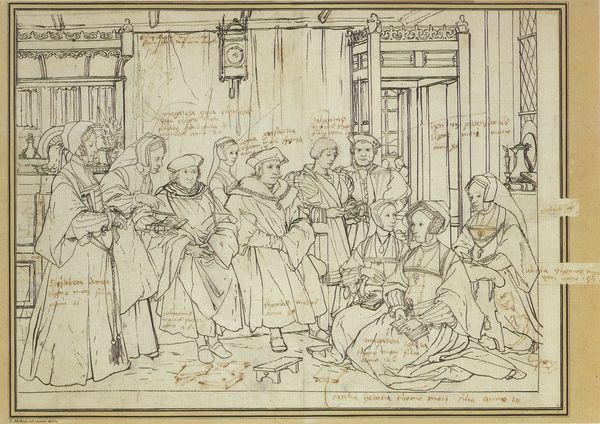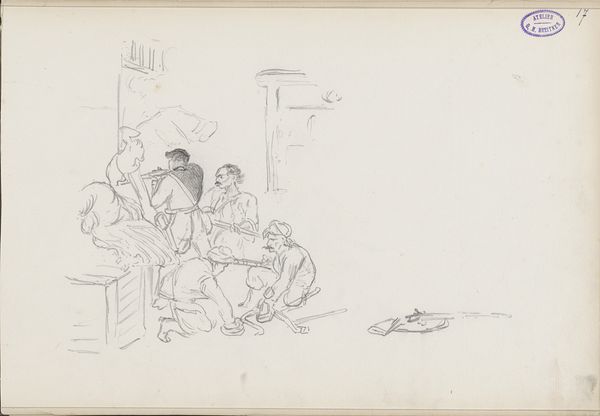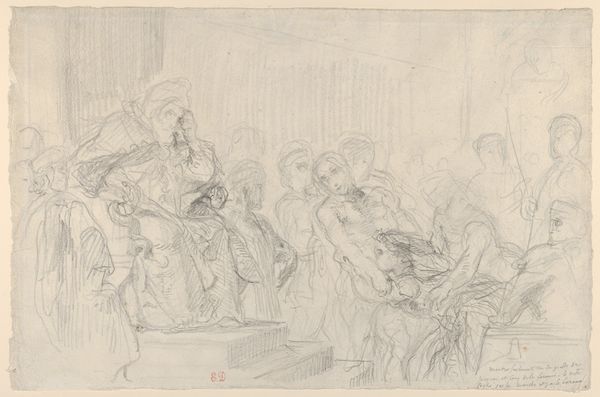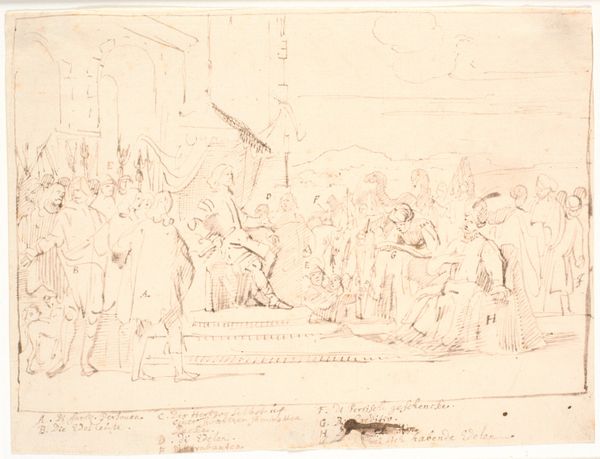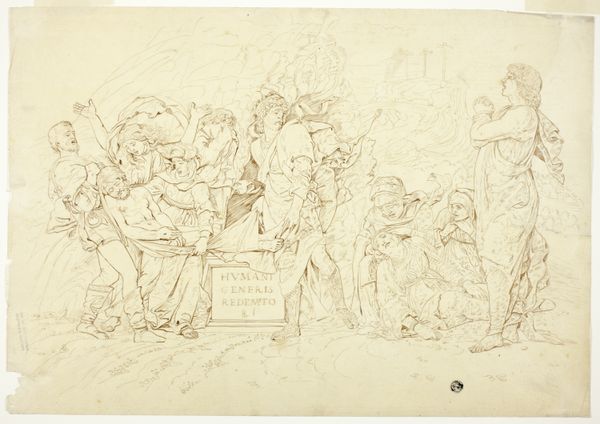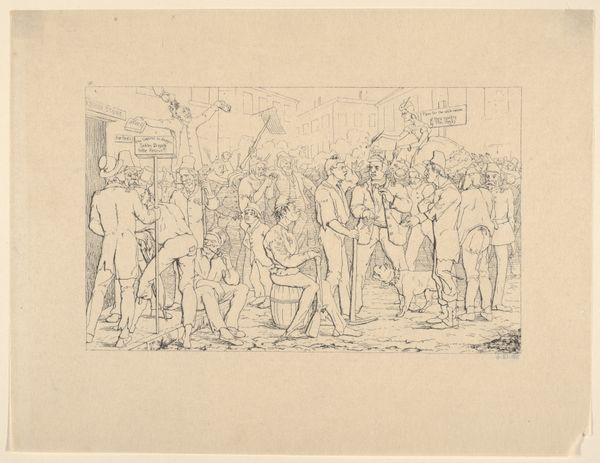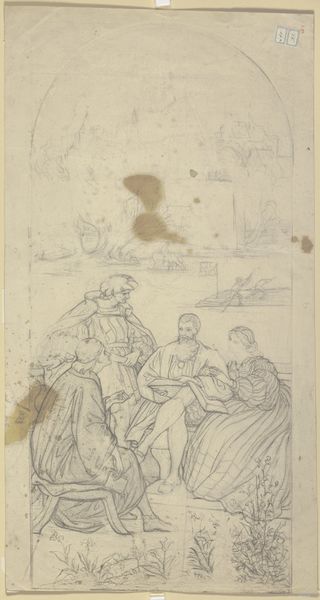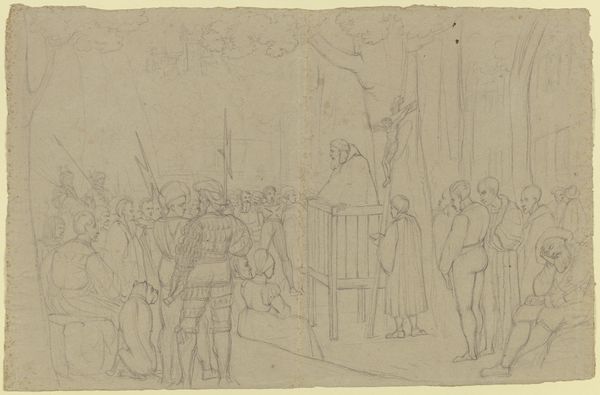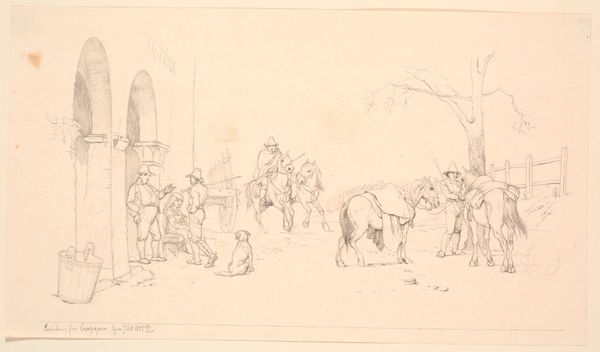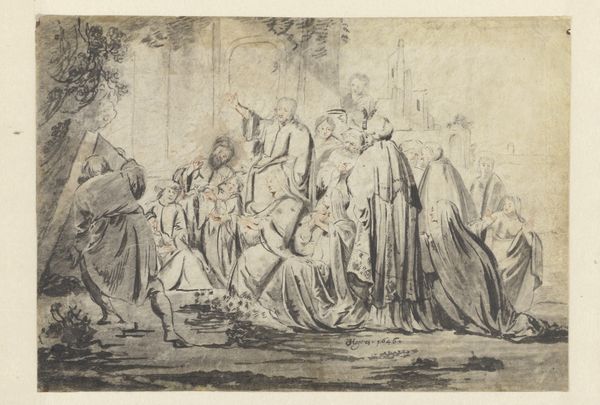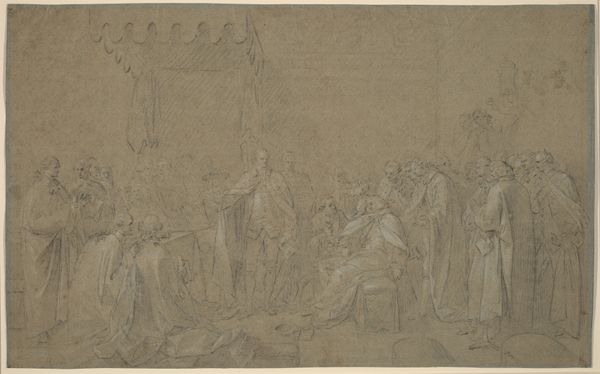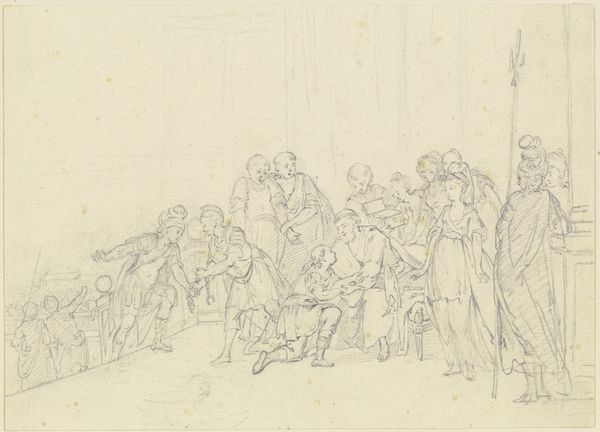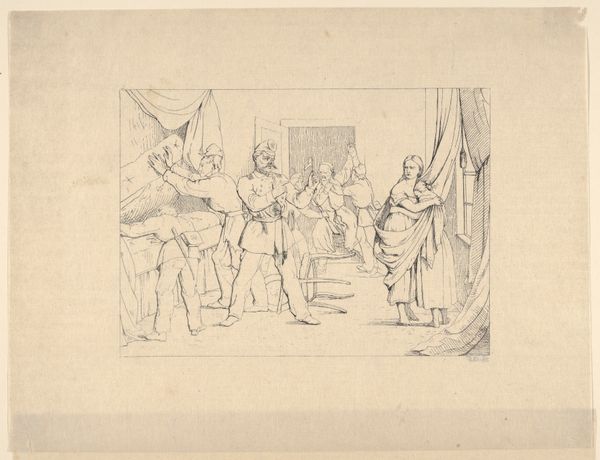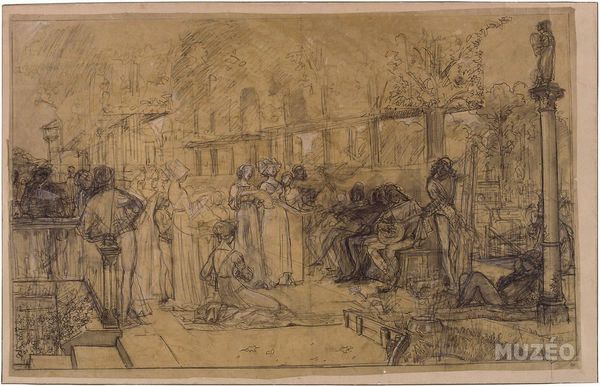
Fotoreproductie van een voorstudie door Hans Holbein de Jonge, voorstellende de familie van Thomas More c. 1875 - 1900
0:00
0:00
drawing, pen
#
portrait
#
drawing
#
figuration
#
11_renaissance
#
group-portraits
#
pen
#
history-painting
Dimensions: height 292 mm, width 399 mm
Copyright: Rijks Museum: Open Domain
Editor: Here we have a photographic reproduction of a pen drawing from around 1875-1900, a study by Hans Holbein the Younger for his painting of the family of Thomas More. The mood seems quite formal, very staged, as was common for family portraiture then. As a historian, what stands out to you in this representation? Curator: What jumps out is not merely the depiction of a family, but the projection of power and piety, carefully constructed for public consumption. Consider the context: Thomas More was a towering figure—a statesman, a lawyer, a philosopher, a writer, ultimately martyred for his faith. How does this image reinforce or perhaps challenge the public persona of More and his family, especially considering it's a *study*, not the finished work? Editor: That's fascinating. So, it’s not just about showing who they are, but also about solidifying their image and legacy? Are the details in the room symbolic? Curator: Precisely. Think about the choices Holbein makes, and, perhaps, the instructions More himself gave. Where does he place himself within the group? What objects surround them? These details tell a story about their values, their status, and how they wish to be perceived by future generations. A portrait of this kind becomes a powerful form of political and social propaganda. Editor: So, the political climate deeply informed the choices in this portrait, even down to the objects in the background. I hadn't thought about it that way. Curator: Exactly. The Renaissance was a period of immense change, of religious upheaval, and of shifting power dynamics. Understanding the cultural and political landscape is crucial for understanding the purpose and impact of images like these. It truly brings a new perspective to just seeing the family! Editor: It's amazing how much a seemingly straightforward portrait reveals when viewed through a historical lens. Curator: Indeed. By examining the public role of art and the politics embedded within, we uncover layers of meaning that might otherwise remain hidden.
Comments
No comments
Be the first to comment and join the conversation on the ultimate creative platform.
